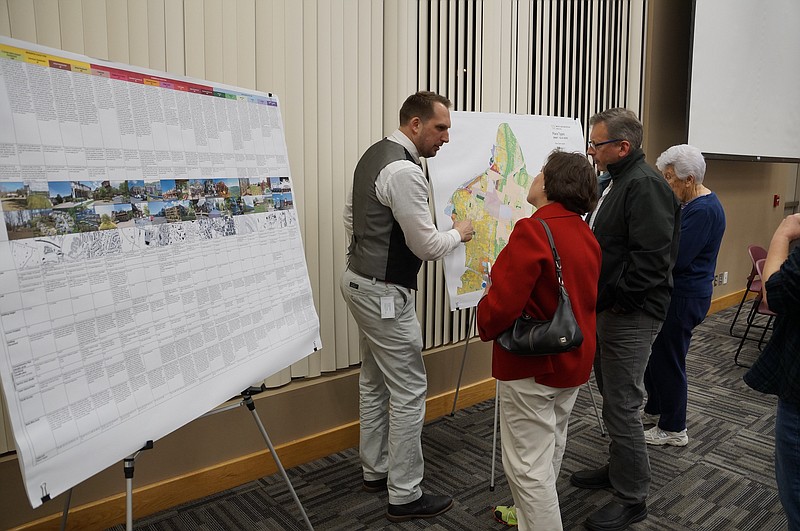After receiving feedback from stakeholders involved with the area's comprehensive growth plan, local planners have made a series of major revisions to the draft.
The bulk of the revisions revolve around the document's policy recommendations, which are meant to serve as a guide for the Chattanooga-Hamilton County Regional Planning Commission when making decisions about the future of the White Oak Mountain Area, such as whether to approve or deny a zoning case. The White Oak Mountain Area is defined as East Brainerd, Collegedale, Ooltewah, Apison and Summit.
As currently proposed, the revisions would change those recommendations from a prescriptive set of guidelines, to an assortment of options meant to be used primarily for informational purposes by the developer and community.
The options, which include pros, cons and alternatives for consideration, would give developers more flexibility, said John Bridger, executive director of the Chattanooga-Hamilton County Regional Planning Agency.
"Rather than us saying 'You need to do this,' it's information for their use and they can decide how they want to use it. It's more like, 'Here are some [suggestions] to consider when you're putting together a project,'" he explained.
Bridger said RPA officials heard from stakeholders - many of whom are builders - that the initial policies could have unintended cost consequences for developers, which would ultimately funnel down and increase the cost of housing for potential homebuyers.
For example, he explained, if a developer lost five lots on a 20-lot property while establishing a required buffer, the sale price of each of the remaining 15 lots would increase to ensure a return on investment.
Bridger noted that the revisions would also restrict the Planning Commission's staff from pressing developers to implement priorities that the community outlined through input in the comprehensive plan, such as better connectivity through sidewalks, greenways or bike lanes; green buffers along certain corridors to preserve the area's rural character; and minimized development in established locations to preserve sensitive natural resources.
Instead, the staff would focus its review on the growth plan's "place types" map to ensure proposed developments fall in line with the appropriate use and character of the area. A sampling of those "place types" includes mixed-residential, a designation that consists of a variety of residential housing types; and neighborhood centers, small-scale retail areas that serve a local neighborhood or group of neighborhoods.
To achieve the plan's initial recommendations, more emphasis would be placed on developers working with the community to adopt some of the options residents indicated they want to see for their particular area, Bridger said.
"So our role is not as significant in the review of a project," he explained. "We still have a role, but it's limited to the land use plan now and not related to the policy recommendations of the plan itself."
Based on the feedback they get from the community, RPA officials said they may hold another meeting with the public to review the final draft sometime in late July.
"We want the community to review this and give us their feedback because we want to make sure the policy aligns with where the community's values are," Bridger said. "I look forward to hearing from the community and what their feedback is, and that tells us where we need to go from here."
Residents can review the revised plan document online at chcrpa.org. Feedback can be sent to RPA Principal Planner Pam Glaser at pglaser@chattanooga.gov by July 6.
Email Myron Madden at mmadden@timesfreepress.com.


